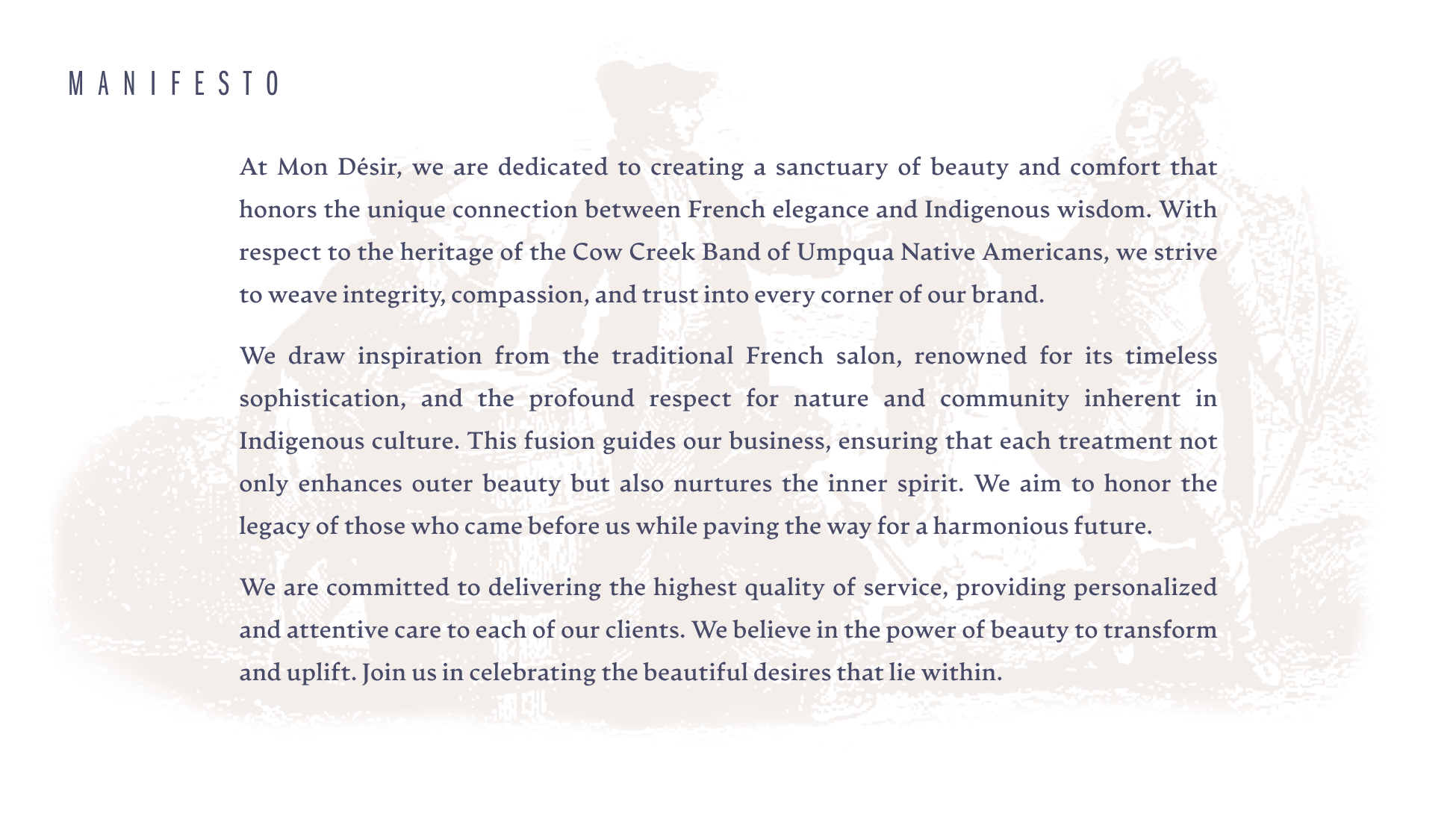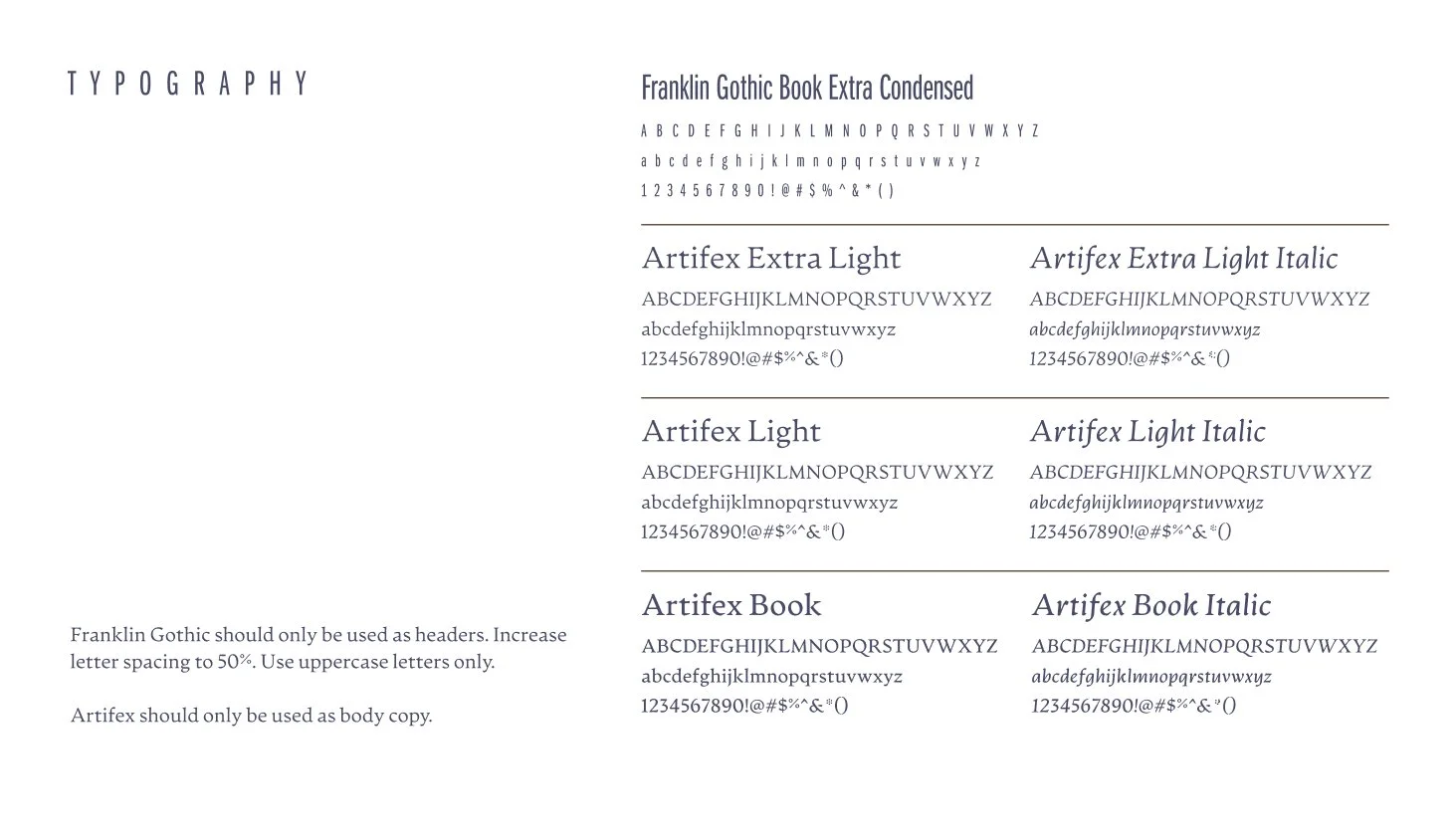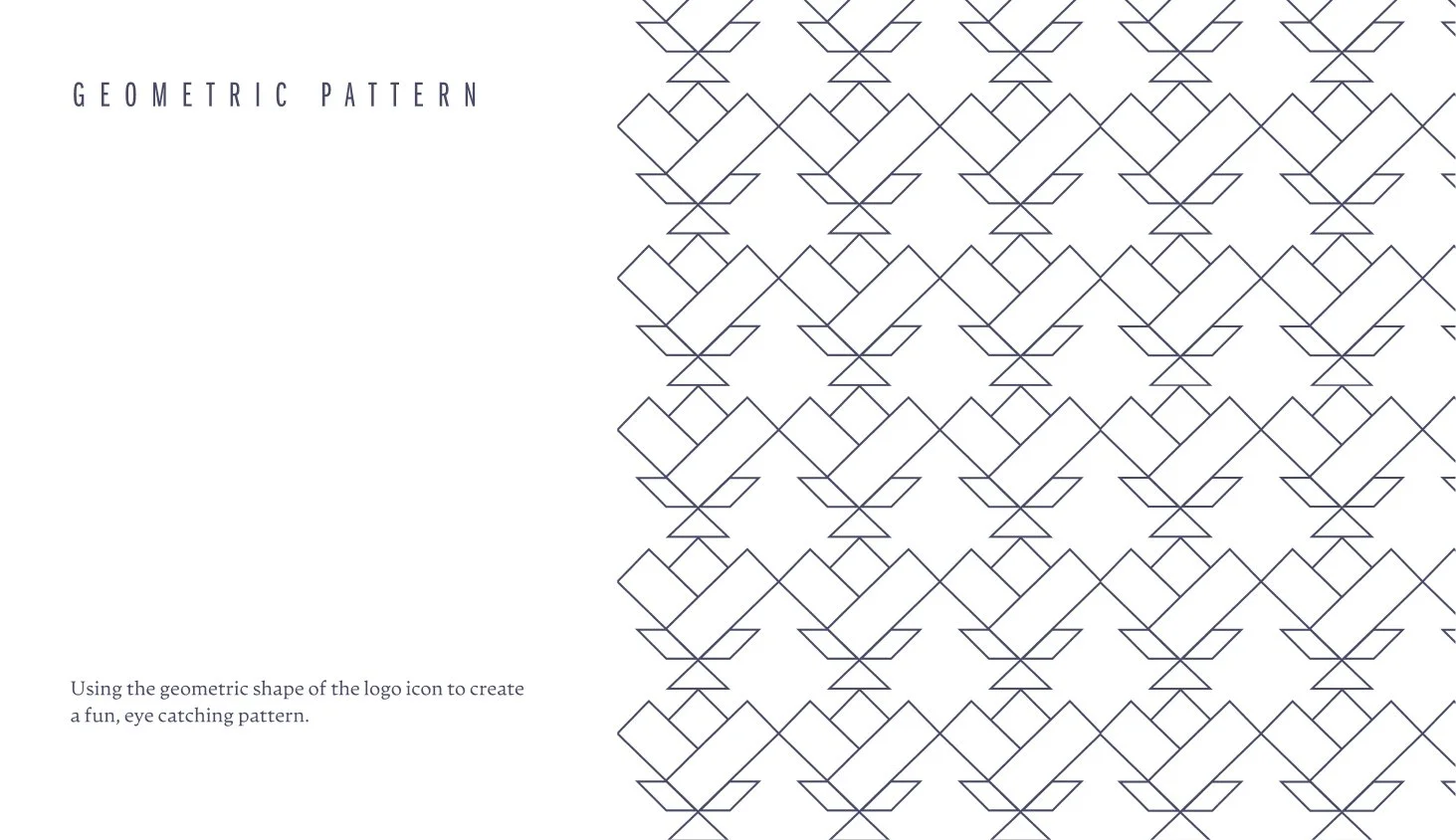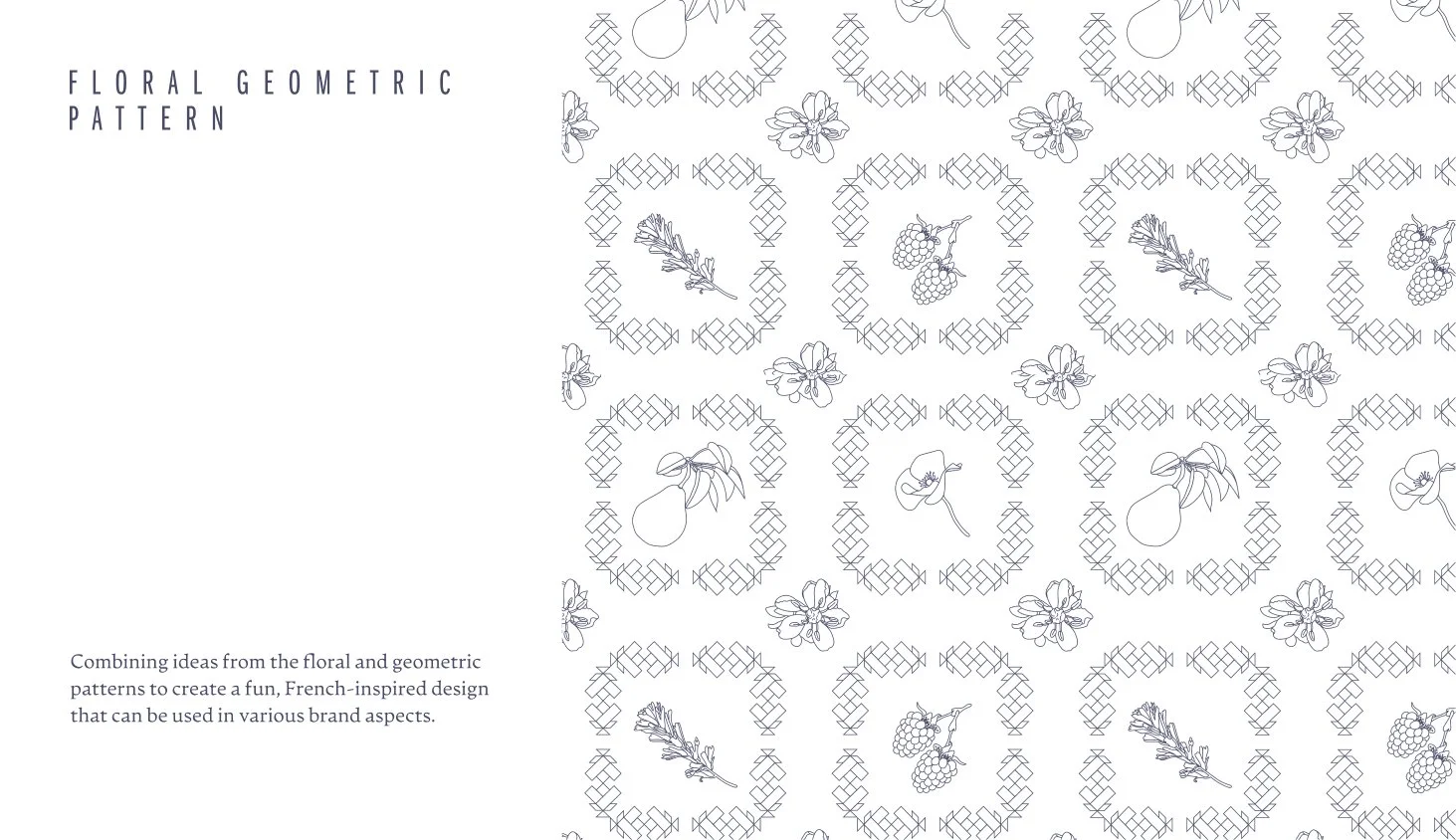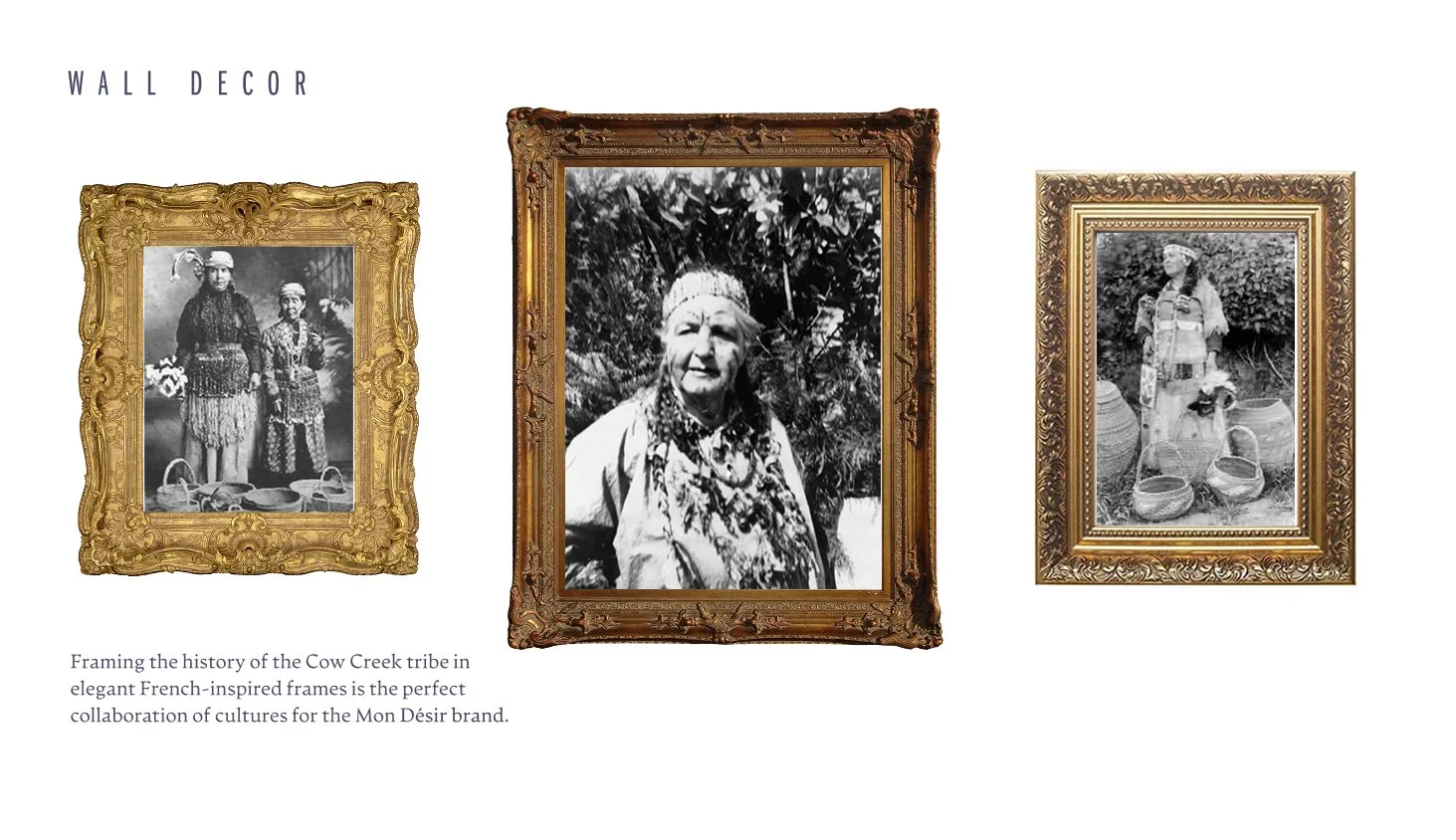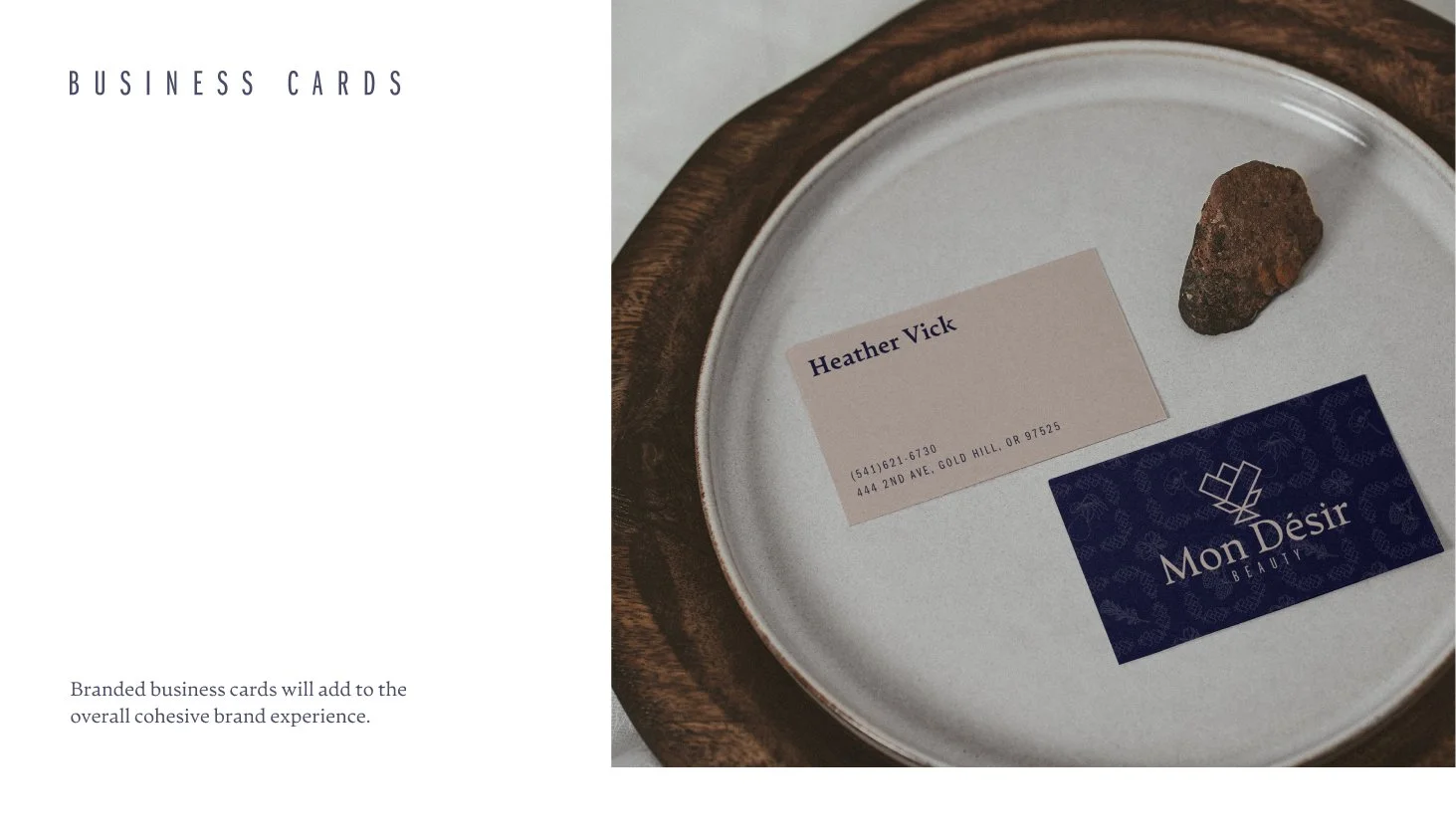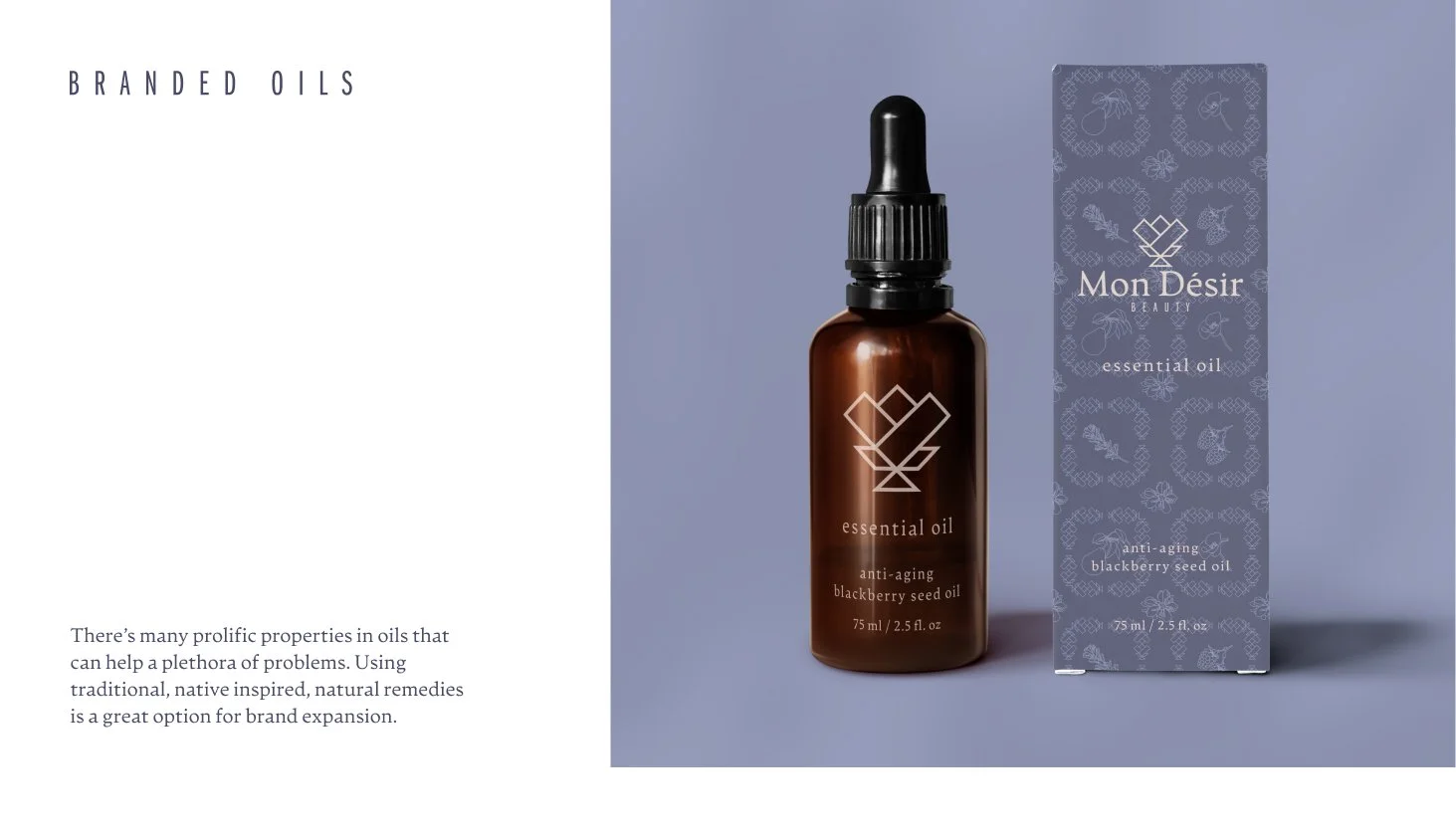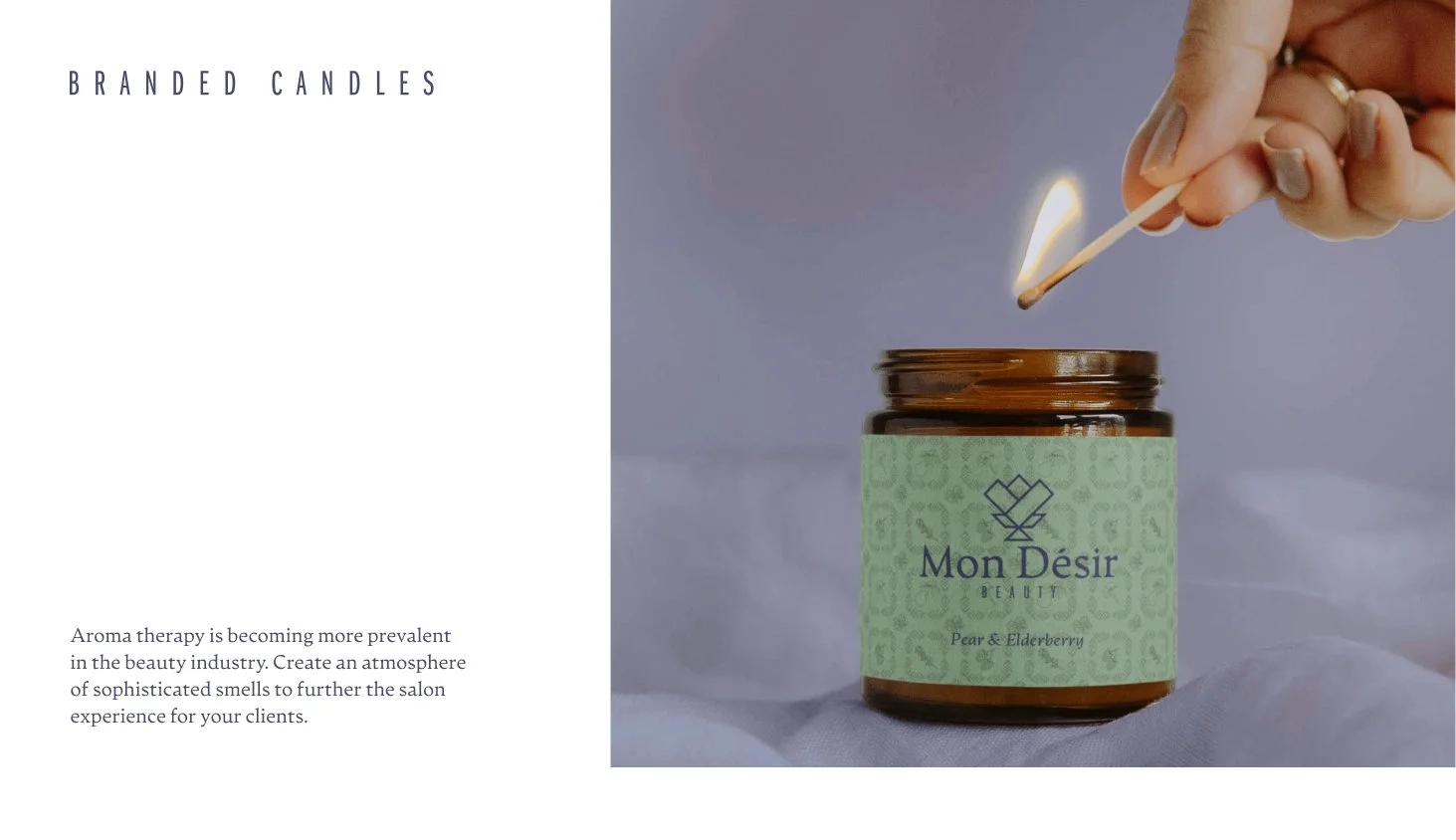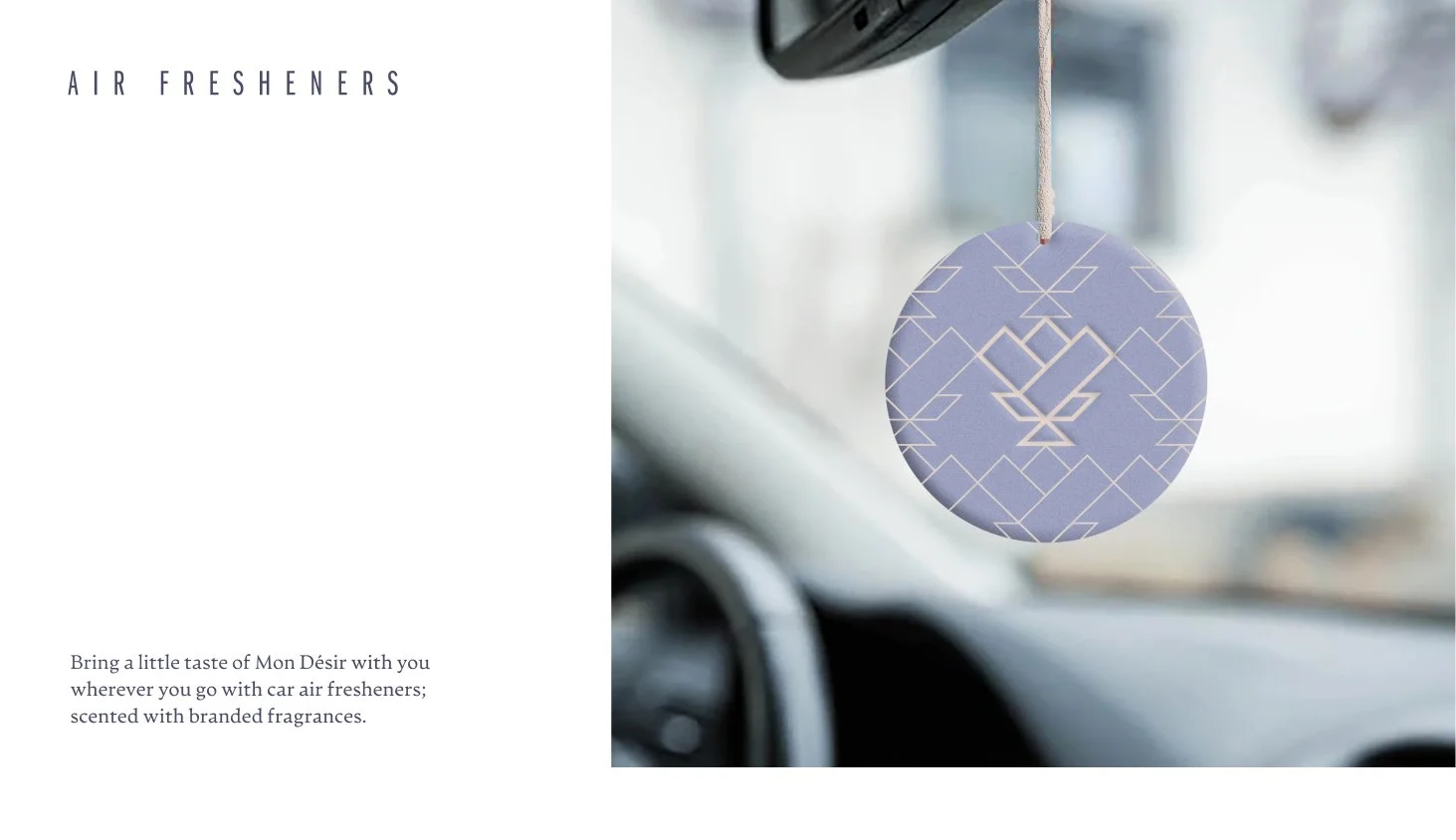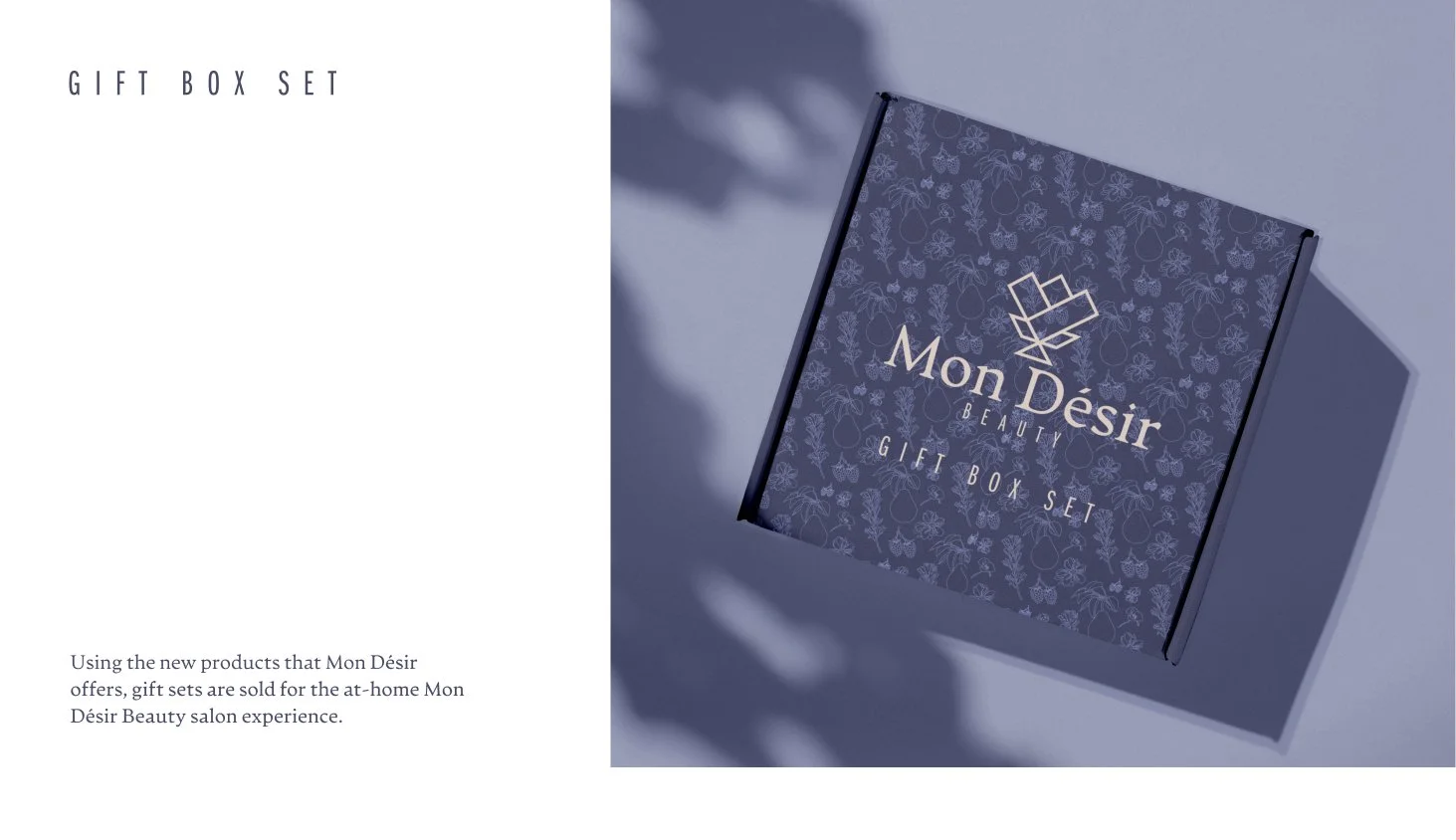
-
At Mon Désir, we are devoted to creating a sanctuary of beauty and comfort that honors the unique harmony between French elegance and the Indigenous tradition of the Cow Creek Band of Umpqua Tribe of native Americans, we strive to infuse integrity, compassion, and trust into every aspect of our brand.
Inspired by the timeless sophistication of the traditional French salon and the profound connection to nature and community rooted in Indigenous culture, we blend these influences to guide our work. Each treatment is designed to enhance outer beauty while nurturing the inner spirit, honoring the legacy of those who came before us and fostering a vision of a more harmonious future.
Our commitment is to provide the highest quality service through personalized, attentive care. At Mon Désir, we believe in the transformative power of beauty to uplift and inspire. Join us in celebrating the desires that dwell within us all.
BRAND GUIDLINES

-
Mon Desir Beauty is a salon located in the small town of Gold Hill, Oregon. Currently, its only form of branding is a metal sign above the storefront. This project aims to develop a comprehensive set of brand guidelines to better represent the salon's identity and values.
The owner, Heather Vick, is a proud member of the Cow Creek Band of Umpqua Tribe of Native Americans. She is eager to incorporate elements of her Indigenous heritage into the salon's branding. At the same time, the salon’s name—Mon Desir, a French phrase meaning “my desire”—adds a unique cultural layer to the brand. This dual influence invites a thoughtful exploration of how French and Cow Creek visual traditions can be harmoniously blended.
The goal of this prospectus is to demonstrate how cultural fusion can inform and enrich a brand identity, particularly for a beauty salon. It will explore ways to balance and celebrate both French and Indigenous aesthetics to create a cohesive and meaningful visual identity for Mon Desir Beauty.
-
Heather Vick, owner of Mon Désir Beauty, has long dreamed of opening a salon in her hometown of Gold Hill, Oregon. With deep community ties and a lifelong passion for hair, she wants her salon to reflect the warmth, honesty, and connection of small-town life.
Her goals include developing a complete brand system—logo, socials, and interior design—and hosting annual events that build community in the Rogue Valley. As a proud member of the Cow Creek Band of Umpqua Tribe, Heather also hopes to incorporate her heritage into the brand through traditional patterns, colors, and materials.
The salon’s name, Mon Désir, honors a beloved French-themed restaurant once cherished by Heather and her sister. This French influence adds elegance and offers opportunities for refined design and curated salon experiences.
Cultural respect is central to the branding. As Indigenous designer Sadie Red Wing notes, designers must avoid replicating sacred or family-specific artwork. Instead, the brand will draw from authentic, respectful sources to honor both Cow Creek and French influences with integrity.

-
French settlers first encountered Native American tribes in what is now Canada in the early 1500s, forming cooperative relationships centered around the fur trade. As French-Canadian settlers moved south into the U.S. during the 1800s, they continued this trade-based rapport with western tribes, including the Cow Creek Band of Umpqua Native Americans.
The French respected the Indigenous peoples’ skills in hunting, fishing, and foraging, often joining them on expeditions and exchanging European goods—like cookware and weapons—for animal pelts. This mutual respect led to a blending of cultures, to the point where other European settlers saw the French as adopting Indigenous ways of life.
To reflect this unique relationship in branding, motifs from the fur trade—such as pelts, fish, and foraged plants—can influence the salon’s graphic and interior design. One approach is to blend traditional French floral patterns with plants native to Cow Creek land, replacing typical European flowers with regional ones like the Pacific bleeding heart, blueblossom shrub, and evergreen huckleberry.
-
The Cow Creek Band of Umpqua has long been known for its generosity and resilience. When early settlers arrived, the tribe welcomed them with respect—offering food and even inviting them on hunting trips. However, by the early 1800s, colonization by Euro-Americans had significantly disrupted the local ecosystem. The use of firearms scared away wildlife, and washing clothes in creeks muddied the water, affecting fish populations.
Despite these challenges, the Cow Creek people continued to show generosity. They were among the first tribes to sign a treaty with the U.S. government—a treaty that was neglected for over a century. As a result, many tribal members went into seclusion, often marrying into white families, particularly those of French descent.
Weaving played a central role in Cow Creek culture. Using materials like spruce roots, maidenhair ferns, and natural dyes, they created intricately woven baskets for gathering food and crafting fishing traps.

-
French salons in the 1600s were exclusive social gatherings, often hosted by upper-class women. These events featured conversation, games, drinks, and entertainment, eventually becoming hubs for political and philosophical discourse during the Enlightenment. Uniquely, salons offered women a rare position of influence and equality in society.
French châteaux—manors occupied by nobility—featured interiors inspired by Italian design, with an emphasis on craftsmanship and ornate detail. Common elements included upholstered furniture, gold and silver accents, and luxurious fabrics like satin and velvet, which remain symbols of elegance today.
Heather wants to bring the warmth and sophistication of French-château style into Mon Désir Beauty. This will be reflected through soft, earthy tones—browns, greens, and purples—paired with gold accents, wood detailing, and plush textures. The design will balance comfort and luxury, blending French elegance with Cow Creek-inspired patterns and materials, creating a space that feels both cozy and refined.
Tying the Styles together
COLOR
Combining colors from both French design and Native art can create a rich, elegant pallet.
BALANCE
In order to respect of the historical power imbalances of the French over the Indigenous people, this project should primarily focus on Indigenous art with French inspiration.
PATTERN
Taking elements of each styles patterns can create a new, unique pattern that feels traditional, yet inspired.




